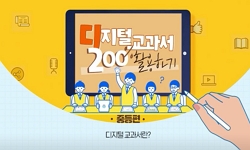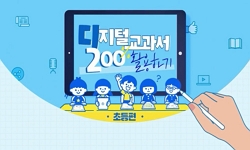본 연구의 목적은 디지털교과서의 특성에 기반하여 디지털교과서의 검 · 인정 심사 절차를 체계적이고 타당하게 개발하는 데에 있다. 이를 위하여 이 연구에서는 디지털교과서의 심사 절차...
http://chineseinput.net/에서 pinyin(병음)방식으로 중국어를 변환할 수 있습니다.
변환된 중국어를 복사하여 사용하시면 됩니다.
- 中文 을 입력하시려면 zhongwen을 입력하시고 space를누르시면됩니다.
- 北京 을 입력하시려면 beijing을 입력하시고 space를 누르시면 됩니다.

디지털교과서의 검 · 인정 심사 절차 개발 = A Study on the Development of Evaluation Process for Digital Textbook
한글로보기https://www.riss.kr/link?id=A100329011
- 저자
- 발행기관
- 학술지명
- 권호사항
-
발행연도
2013
-
작성언어
Korean
- 주제어
-
KDC
374
-
등재정보
KCI등재
-
자료형태
학술저널
- 발행기관 URL
-
수록면
31-58(28쪽)
-
KCI 피인용횟수
2
- 제공처
-
0
상세조회 -
0
다운로드
부가정보
국문 초록 (Abstract)
본 연구의 목적은 디지털교과서의 특성에 기반하여 디지털교과서의 검 · 인정 심사 절차를 체계적이고 타당하게 개발하는 데에 있다. 이를 위하여 이 연구에서는 디지털교과서의 심사 절차로 ‘심사 단계 및 공급 단계’와 ‘심사 후(follow-up) 모니터링(질 관리) 단계’를 설정하여 제안하였다. 심사 단계에서 기존의 서책교과서 검정 심사에서 적용되었던 ‘기초조사’, ‘본심사’ 단계를 통합하였으며, 심의회 운영 방안으로 하나의 과목 심의회에 내용과 기술의 두 전문가 영역을 통합하여 배치하는 것을 제안하였다. ‘심사 후(follow-up) 모니터링 단계’는 디지털교과서 모니터링, 수정 및 보완의 단계를 포함하였다. 이는 적합 판정을 받은 디지털교과서 발행사와 심의회 간 협조를 통해 교과서의 질적 수준을 높이고자 하는 목적으로 설계한 것이며, 심사를 통과한 이후에도 수정 · 보완 방식 및 기간 면에서 유연성을 가질 수 있다. 본 연구에서 제안한 디지털교과서 심사 절차는 디지털교과서의 특성이 반영된 것으로, 질 높은 디지털교과서가 원활하게 학교 현장에 적용되는 데 기여할 것이다.
다국어 초록 (Multilingual Abstract)
From the literature review and the responses of the expert committee, the overall results of this study indicated that the evaluation process are needed to include two essential steps of ‘evaluation,’ and ‘follow-up monitoring’ for effective evaluation of digital textbook. Specifically, the first step of ‘evaluation’ is one integrated type of ‘preliminary evaluation’ and ‘main evaluation’ which were applied in traditional print textbook. In this step, one committee of one subject matter for authorizing digital textbook consists of contents (subject matter) experts and technology experts. In addition, the second step of ‘follow-up monitoring’ is designed to guarantee quality assurance of accepted and published digital textbooks sustainedly. In this step, a consultative group is formed to collaborate effectively and efficiently between digital textbook publishing company and the committee for authorizing digital textbook after authorizing process. Also, in this step, the contents and interface design of digital textbooks can be changed and updated continuously through the activities of the consultative group.
The purpose of this study was to develop evaluation process for digital textbook which was based on the characteristics of digital textbook for authorizing it. For this purpose, this study followed following processes. First, this study explored curre...
The purpose of this study was to develop evaluation process for digital textbook which was based on the characteristics of digital textbook for authorizing it. For this purpose, this study followed following processes. First, this study explored current academic issues and outcomes about the concepts and evaluation of digital textbook through literature review of previous studies. In addition, it drew main characteristics of digital textbook from analysis of currently published, domestic- and foreign digital textbooks. Second, this study employed an expert committee to develop the evaluation process for digital textbook.
From the literature review and the responses of the expert committee, the overall results of this study indicated that the evaluation process are needed to include two essential steps of ‘evaluation,’ and ‘follow-up monitoring’ for effective evaluation of digital textbook. Specifically, the first step of ‘evaluation’ is one integrated type of ‘preliminary evaluation’ and ‘main evaluation’ which were applied in traditional print textbook. In this step, one committee of one subject matter for authorizing digital textbook consists of contents (subject matter) experts and technology experts. In addition, the second step of ‘follow-up monitoring’ is designed to guarantee quality assurance of accepted and published digital textbooks sustainedly. In this step, a consultative group is formed to collaborate effectively and efficiently between digital textbook publishing company and the committee for authorizing digital textbook after authorizing process. Also, in this step, the contents and interface design of digital textbooks can be changed and updated continuously through the activities of the consultative group.
목차 (Table of Contents)
- Ⅰ. 서론
- Ⅱ. 이론적 배경
- 1. 디지털교과서의 개념
- 2. 디지털교과서 심사관련 연구
- Ⅲ. 연구 방법
- Ⅰ. 서론
- Ⅱ. 이론적 배경
- 1. 디지털교과서의 개념
- 2. 디지털교과서 심사관련 연구
- Ⅲ. 연구 방법
- 1. 디지털교과서 특성 분석 방법
- 2. 디지털교과서 심사 절차 구안 방법
- Ⅳ. 연구 결과
- 1. 국내외 디지털교과서 분석 결과
- 2. 디지털교과서 심사 절차 모형
- Ⅴ. 결론
참고문헌 (Reference)
1 류지헌, "초등학교 수학용 디지털교과서가 성별 및 적용환경에 따라 학업성취와 매체인식에 미치는 영향" 한국교육공학회 24 (24): 53-83, 2008
2 최선영, "초등과학 디지털 교과서 활용이 학생들의 과학적 문제 해결력에 미치는 영향" 한국초등과학교육학회 28 (28): 132-141, 2009
3 박현아, "초등 영어 디지털교과서 효과성 메타 분석을 통한 활용 방안 연구" 현대영어교육학회 11 (11): 165-192, 2010
4 조난심, "전자교과서의 편찬 및 검정 방안에 관한 연구" 한국교육과정평가원 2000
5 강신천, "전자교과서 개발을 위한 체제적 접근 전략과 방향 탐구" 한국교육정보미디어학회 8 (8): 5-28, 2002
6 "일본 개륭당 미술 디지털교과서(‘도화공작학습지도서 수업실천편 3ㆍ4학년(하) CD-ROM 디지털판교과서,’ ‘도화공작학습지도서-수업실천편 5ㆍ6학년(상), (하) CD-ROM 디지털판교과서,’ ‘미술학습지도서 2ㆍ3학년 디지털판교과서 (CD-ROM)’)"
7 교육과학기술부, "인재대국으로 가는 길: 스마트교육 추진 전략 실행계획(2011.10)" 교육과학기술부 2011
8 이돈언, "웹 전자교과서 평가도구 개발" 4 (4): 53-64, 2001
9 천재교육, "영어 중학교 3학년 디지털교과서(시험판)한국과학창의재단 사이언스올 iPad용 자바실험실 애플리케이션"
10 장은숙, "영어 전자교재 선정을 위한 평가 준거" 6 (6): 61-81, 2007
1 류지헌, "초등학교 수학용 디지털교과서가 성별 및 적용환경에 따라 학업성취와 매체인식에 미치는 영향" 한국교육공학회 24 (24): 53-83, 2008
2 최선영, "초등과학 디지털 교과서 활용이 학생들의 과학적 문제 해결력에 미치는 영향" 한국초등과학교육학회 28 (28): 132-141, 2009
3 박현아, "초등 영어 디지털교과서 효과성 메타 분석을 통한 활용 방안 연구" 현대영어교육학회 11 (11): 165-192, 2010
4 조난심, "전자교과서의 편찬 및 검정 방안에 관한 연구" 한국교육과정평가원 2000
5 강신천, "전자교과서 개발을 위한 체제적 접근 전략과 방향 탐구" 한국교육정보미디어학회 8 (8): 5-28, 2002
6 "일본 개륭당 미술 디지털교과서(‘도화공작학습지도서 수업실천편 3ㆍ4학년(하) CD-ROM 디지털판교과서,’ ‘도화공작학습지도서-수업실천편 5ㆍ6학년(상), (하) CD-ROM 디지털판교과서,’ ‘미술학습지도서 2ㆍ3학년 디지털판교과서 (CD-ROM)’)"
7 교육과학기술부, "인재대국으로 가는 길: 스마트교육 추진 전략 실행계획(2011.10)" 교육과학기술부 2011
8 이돈언, "웹 전자교과서 평가도구 개발" 4 (4): 53-64, 2001
9 천재교육, "영어 중학교 3학년 디지털교과서(시험판)한국과학창의재단 사이언스올 iPad용 자바실험실 애플리케이션"
10 장은숙, "영어 전자교재 선정을 위한 평가 준거" 6 (6): 61-81, 2007
11 송해덕, "어포던스 관점에서 디지털 교과서 사용편의성에 영향을 미치는 요인분석 연구" 한국교육공학회 25 (25): 135-155, 2009
12 주형미, "스마트(SMART)교육을 위한 디지털교과서 심사기준 및 절차 개발" 한국교육과정평가원 2012
13 박기범, "사회과 디지털콘텐츠의 한계와 가능성-사이버 가정학습 분석을 중심으로-" 한국사회과교육학회 43 (43): 25-56, 2011
14 송해덕, "사회경제적 수준에 따른 디지털 교과서 활용이 초등학교 수학교과 학업성취에 미치는 효과" 한국초등교육학회 24 (24): 421-437, 2011
15 최정임, "보편적 학습설계(UDL)를 반영한 디지털 교과서 설계 원리" 한국교육공학회 25 (25): 29-59, 2009
16 "미국 Davis사 미술 디지털교과서 플랫폼"
17 "미국 Davis사 미술 디지털교과서"
18 김재경, "디지털교과서의 표준기반 저작 및 배포 포맷에 대한 적용방안" 12 (12): 716-719, 2009
19 강숙희, "디지털교과서의 설계를 위한 교육공학적 접근 : 유형과 기능을 중심으로" 14 (14): 1-22, 1998
20 서순식, "디지털교과서 활용이 문제해결력 향상에 미치는 효과" 한국정보교육학회 13 (13): 263-271, 2009
21 이혜숙, "디지털교과서 활용 효과에 관한 영향 - 6학년 수학 쌓기나무 단원을 중심으로 -" 한국초등수학교육학회 13 (13): 97-114, 2009
22 정의석, "디지털교과서 현황 및 발전방향" 347 : 14-22, 2008
23 유관희, "디지털교과서 표준화 현황" 26 (26): 53-61, 2008
24 한국교육학술정보원, "디지털교과서 제작 가이드라인(안)" 한국교육학술정보원 2012
25 장시준, "디지털교과서 전송 및 발행 등 법제 개선 연구" 한국교육학술정보원 2011
26 한국교육학술정보원, "디지털교과서 전송 및 발행 등 법제 개선 연구" 한국교육학술정보원 2011
27 홍후조, "디지털교과서 수요 조사ㆍ분석 연구" 68 : 52-58, 2012
28 한국교육학술정보원, "디지털교과서 법ㆍ제도 개선 및 업무 추진 방안" 한국교육학술정보원 2011
29 함승연, "디지털교과서 국ㆍ검ㆍ인정 업무처리지침 개발" 한국교육과정평가원 2012
30 박용훈, "디지털교과서 검인정 방법에 관한 연구" 5 (5): 799-803, 2007
31 정의석, "디지털교과서 개발전략 및 발전방향에 관한 연구" 35 (35): 230-235, 2008
32 정영식, "디지털 교과서의 평가 준거 개발" 한국컴퓨터교육학회 11 (11): 13-20, 2008
33 "교육과학기술부, 한국교육학술정보원 e-교과서 사이트"
34 교육과학기술부, "교과용도서에 관한 규정, 대통령령 제23726호(2012. 4. 16)"
35 "교과서민원바로처리센터"
36 한국교육학술정보원, "‘국가이러닝품질관리센터’ 이러닝 콘텐츠 품질인증 안내서" 한국교육학술정보원 2012
37 김소영, "e-Pub 표준 기반 e-교과서의 구조 설계" 37 (37): 241-244, 2010
38 Diaz, P., "Usability of hypermedia educational e-books" 9 (9): 2003
39 International Association for K-12 Online Learning(iNACOL), "The National standards for Quality Online Courses(Ver. 2)"
40 Lim, C., "Improving the usability of the user interface for a digital textbook platform for elementary-school students" 60 (60): 159-173, 2012
41 Withgott, J., "Environmental Scicence(Your World Your Turn)" Pearson Education. Inc. from iPad iBooks 2012
42 Wrench, J. S., "Educational software evaluation form: Towards a new evaluation of educational software" 3 : 34-46, 2001
43 Kim, M., "An XML-based digital textbook and its educational effectiveness. Advanced in Computer Science and Information Technology" 6059 : 509-523, 2010
44 Leacock, T. L., "A Framework for Evaluating the Quality of Multimedia Learning Resources" 10 (10): 44-59, 2007
45 교육과학기술부, "2014년도 적용을 위한 디지털교과서 검정심사 기본계획(안)(2012.8.27)" 교육과학기술부 2012
46 교육과학기술부, "2012년도 디지털교과서 개발 및 적용 추진계획(안)(2012. 2)" 교육과학기술부 2012
47 노경희, "2010년도 디지털교과서 효과성 측정 연구" 한국교육학술정보원 2011
48 변호승, "2005년 전자교과서 개발 표준안 연구" 한국교육학술정보원 2005
49 교육과학기술부, "(보도자료) 초ㆍ중ㆍ고 교과서의 오류 내용을 매월 바로 잡는다:교과서 상시 수정ㆍ보완 체제 마련"
동일학술지(권/호) 다른 논문
-
- 한국교육과정평가원
- 구영산
- 2013
- KCI등재
-
- 한국교육과정평가원
- 김덕근
- 2013
- KCI등재
-
초등학교 6학년 듣기 · 말하기 수업을 위한 디지털교과서의 활용 사례 연구
- 한국교육과정평가원
- 정현선
- 2013
- KCI등재
-
초등학교 다문화미술교육 방향 탐색을 위한 초등교사 인식에 관한 연구
- 한국교육과정평가원
- 박순덕
- 2013
- KCI등재
분석정보
인용정보 인용지수 설명보기
학술지 이력
| 연월일 | 이력구분 | 이력상세 | 등재구분 |
|---|---|---|---|
| 2026 | 평가예정 | 재인증평가 신청대상 (재인증) | |
| 2020-01-01 | 평가 | 등재학술지 유지 (재인증) |  |
| 2017-01-01 | 평가 | 등재학술지 유지 (계속평가) |  |
| 2013-12-26 | 학회명변경 | 영문명 : Korea Institute of Curriculum & Evaluation -> Korea Institute for Curriculum and Evaluation |  |
| 2013-01-01 | 평가 | 등재학술지 유지 (등재유지) |  |
| 2010-01-01 | 평가 | 등재학술지 유지 (등재유지) |  |
| 2008-01-01 | 평가 | 등재학술지 유지 (등재유지) |  |
| 2005-05-19 | 학술지등록 | 한글명 : 교육과정평가연구외국어명 : The Journal of Curriculum & Evaluation |  |
| 2005-01-01 | 평가 | 등재학술지 선정 (등재후보2차) |  |
| 2004-01-01 | 평가 | 등재후보 1차 PASS (등재후보1차) |  |
| 2003-01-01 | 평가 | 등재후보학술지 선정 (신규평가) |  |
학술지 인용정보
| 기준연도 | WOS-KCI 통합IF(2년) | KCIF(2년) | KCIF(3년) |
|---|---|---|---|
| 2016 | 0.87 | 0.87 | 1.04 |
| KCIF(4년) | KCIF(5년) | 중심성지수(3년) | 즉시성지수 |
| 0.82 | 0.77 | 1.353 | 0.81 |




 RISS
RISS






